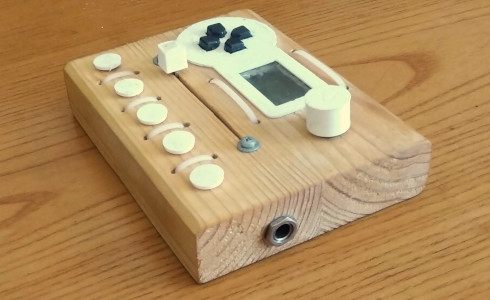ZNEAR synth
Summary
This project is about a synthesizer written for the ATMega328p microcontroller. In this page there is information about building and using the synthesizer.

How it sounds
The possibilities for designing sounds are numerous when adjusting the two oscillators and the effects that are available on them.
This synthesizer was used to create the song "Wavewatching". The song plays at the website's homepage and it is also available to download and listen to in the Music page. Every sound used in this song was made using this synthesizer.
Manual
The operation of the synth is straight forward. One sound of two oscillations can be saved on each of the five sound buttons. When a sound button is pressed, the sound plays and the menu enters it's settings. Once in the sound's settings, the arrows are used to navigate the two oscillations' settings and the slider to change them. There is also a master volume knob on the module, an on/off switch, a charging port and, of course, a female jack output.
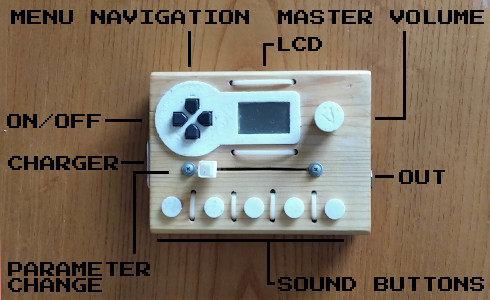
The menu of the synthesizer has three levels of pages:
-
OSC1 - enters oscillation 1 settings
-
NOTE
- WAV - Wave kind used
- VOL - Oscillator volume
- NTE - Note played
- FIN - Fine tuning
- PHA - Initial wave phase
-
ENVELOPE
- ATK - Attack
- DEC - Decay
- SUS - Sustain
- REL - Release
- Rmo - Release mode: linear or non linear
-
SWEEP
- DIR - Direction to high, to low, from high or from low
- SPE - Speed of the sweep
-
VIBRATO
- WAV - Wave kind used
- DEP - Vibrato depth
- SPE - Vibrato speed
-
NOTE
- OSC2 - enters oscillation 2 settings (same settings as OSC1)
- SAVE - saves current settings to EEPROM
Schematics
The circuit revolves around the AVR ATMega328p.
- One of its PWM pins is used to produce the output wave
- One analog input is used to read the slider potentiometer position
- Five digital inputs read the note buttons
- Four more digital inputs are used for the menu arrow buttons
- It communicates with the LCD using SPI protocol
- It runs on a standard configuration of an external 20MHz crystal oscillator
- Two 4.7uF filtering capacitors are used - one for the voltage source and one for the analog to digital multiplexer.
There is also a small analog part in the design. A low pass filter is used between the microcontroller's PWM output and the synth's jack output. Also a logarithmic pot is used as a master volume knob. Finally, for powering the device a 18650 lithium battery is used in combination with a buck converter to supply constant voltage. There is also a battery CC/CV charging module for recharging the battery.
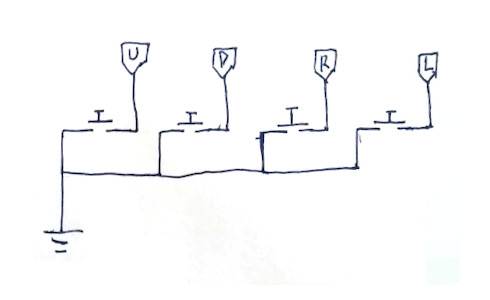
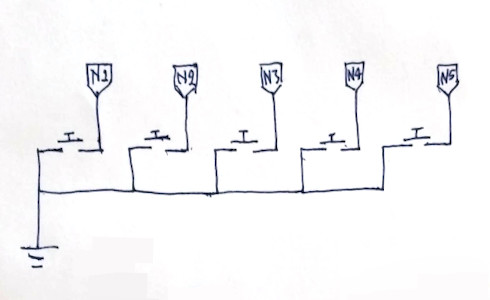
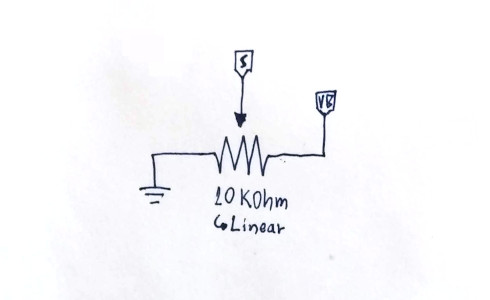
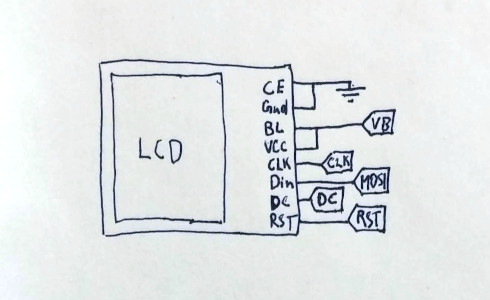
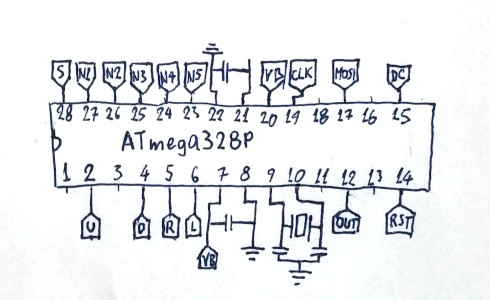
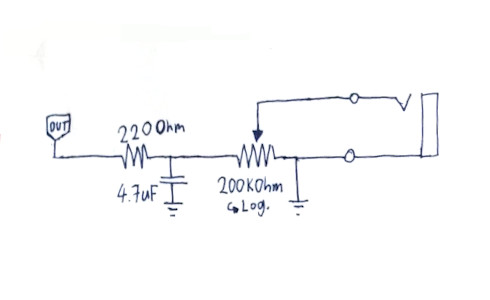

Circuit board
The circuit was put together using mostly free hand soldering. A prototyping board was used to put together some of the parts close to the AVR such as the filter, the oscillator and the filtering capacitors. A chip socket was used to avoid soldering the IC directly on the board. The rest of the connections were made with wire. The boards and components were secured on the casing with hot glue and zip ties.
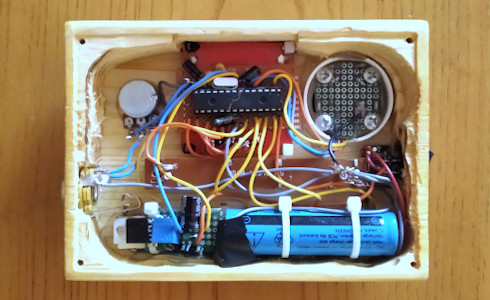
Programming the AVR
The chip was programmed in C++ using Atmel Studio 7. A library was used for the communication with the Nokia 5110 LCD. The library's github page can be found here. In this project the library was upgraded with some custom bitmap rendering functions. The source code of the synthesizer, the edited library and the compiled .hex file are available for download here.
The technique used to synthesize the sounds is called Direct Digital Synthesis. About 39216 times a second, a timer overflow ISR is called that calculates and outputs the next wave sample. The timer is operated in phase correct mode so the overflow frequency is calculated by dividing the clock frequency by 510(20MHz / 510 = 39215.69). This ensures a stable sample rate output.
Every procedure that does not demand precise timing is kept in the main routine. The software button de-bouncing, the monitor control, the envelopes effect, the vibrato and sweep effects all are calculated in a much slower rate in main.
Casing
The main casing was made out of a solid piece of wood that was made hollow using a glass drill and a hand router. The plastic parts of the casing hide some less beautiful spots of the wood and they were 3D printed. A transparent piece of plastic cut out from a CD case is used as protection over the LCD display. The wooden case was painted with linseed oil.
